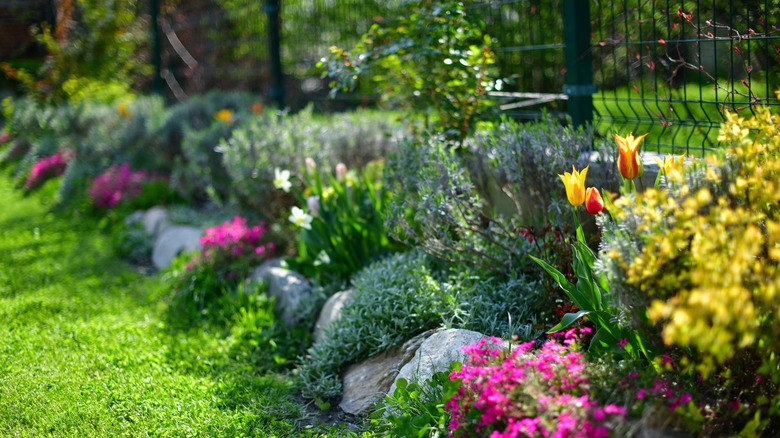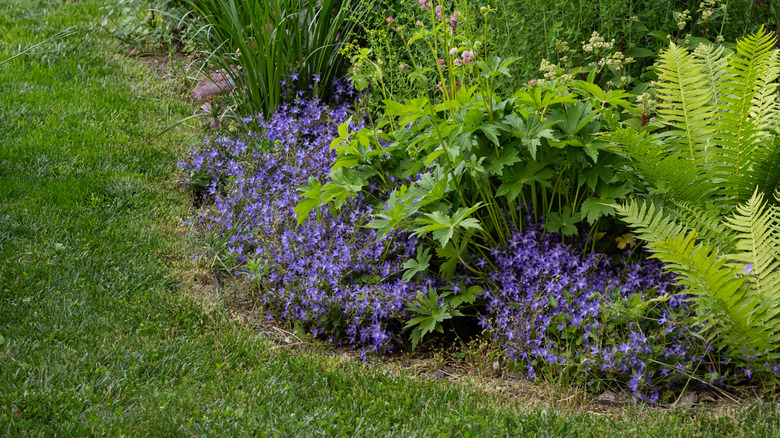The Low-Growing Ground Cover That'll Beautify Your Garden With Blooms All Summer Long
Growing thriving ground cover plants adds functional and aesthetic value to any garden. If you feel your garden is missing something, there's a good chance that the Carpathian bellflower (Campanula carpatica) is just what it needs. This plant is a perennial and semi-evergreen, retaining some of its greenery throughout the winter. Growing to a modest 6 to 12 inches tall and wide, it bursts with plentiful striking purple, pink, blue, or white flowers that bloom from early to late summer.
Carpathian bellflower not only adds flair to the landscape, but it's also incredibly beneficial to your garden. When grown around your existing plants and flower beds, this plant is a natural way to repel deer from your garden. Replacing even a small area of grass with flowering ground cover also adds necessary biodiversity to a yard, which attracts more pollinators to your garden. These bees and butterflies work to help your garden produce more flowers, fruit, and vegetables.
How to grow bellflower in your garden
Carpathian bellflower grows best in USDA Hardiness Zones 3 to 8. This means you'll get the best blooms if you live in a cooler climate. Choose a spacious area of your garden that receives full sun or partial shade. Each plant should be spaced 12 to 14 inches apart. Don't worry, once your new plants grow and bloom, they will blanket the ground. Carpathian bellflower thrives in well-draining, moist, soil that has a lot of organic material and can be loamy or sand. If your garden tends to dry out, you'll need to water the soil regularly. If it's prone to flooding, prevent overflow with useful drainage solutions.
Carpathian bellflower needs to be divided every two to four years to give it space to grow and encourage new growth. This should be done in late spring, April or May, a few weeks after the last frost and before the plants begin blooming. To do so, uproot the plants and divide them vertically from the root. Then, simply replant the new sections with ample space between, water, and fertilize. You can also add the new sectioned plants to other areas of your garden where you want to see blooms from this ground cover throughout the summer.

